JAPANESE TRADITIONAL LIVING AND FARM EXPERIENCE - Live the Traditional Farm Life and Enjoy Fresh Mie Cuisine

Taiki Town is home to around 20 welcoming guesthouses that offer a diverse range of traditional experiences for individual travelers and families. Depending on the season, the Japanese Traditional Living and Farm Experience packages together activities such as harvesting vegetables, wearing a kimono, preparing a seafood dinner, visiting a fish market and more. Participants will check-in at their guesthouse around 3:00 PM and check-out at 10:00 AM the following morning. The cost is ¥10,000 per person and that includes dinner, breakfast and transfers to and from the nearest train station. This experience is a wonderful way to fully appreciate the hospitality, natural beauty and delicious local food of Taiki Town in Mie Prefecture.
About the Author:
Trying fresh, local food and dishes has always been one of the best parts of traveling for me. When I moved to Japan, I already loved Japanese food. Then I realized that I had only scratched the surface of what this country’s cuisine has to offer. Whenever I have a chance to visit a different part of Japan, new food experiences are always on my to-do list.
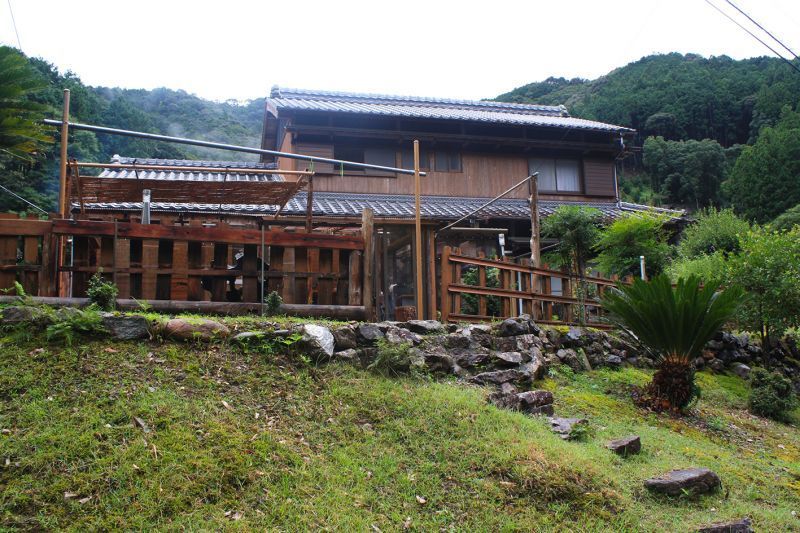
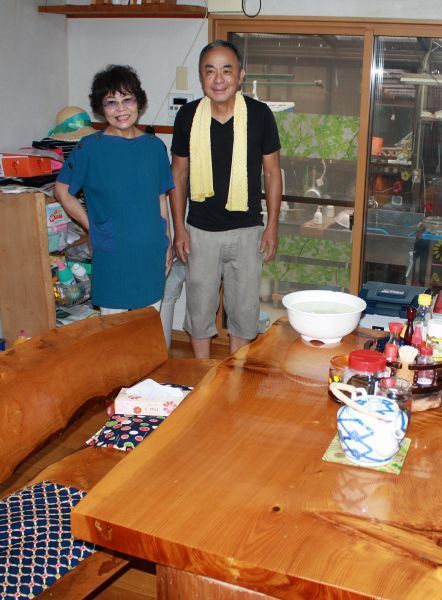
Caption: The Oguras were welcoming and friendly hosts.
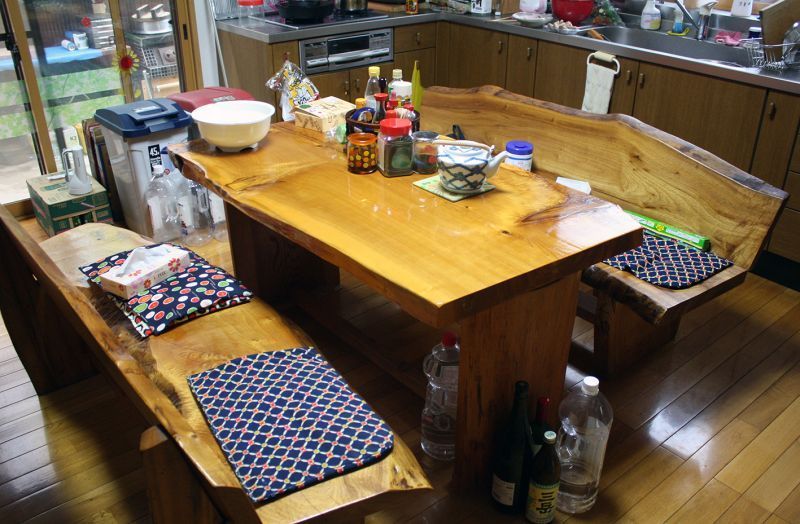
Caption: Ogura-san made this kitchen table and benches.
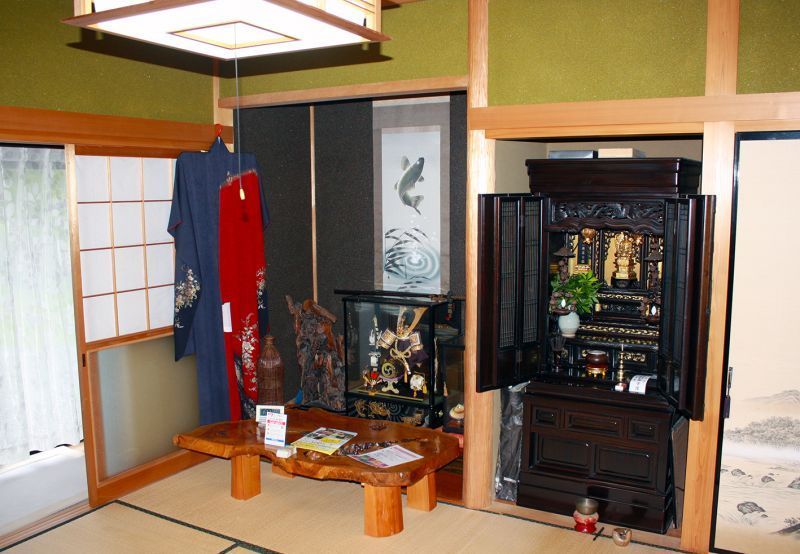
Caption: One of the traditional tatami rooms in the guesthouse has many unique items.
In their yard, the Oguras have a large vegetable garden that provides fresh produce for meals in the guesthouse. Once I saw the okra and bitter melon (goya in Japanese), I knew I was going to be in for a treat while staying there. They also have a large mushroom growing section, but it was not the right season when I visited.
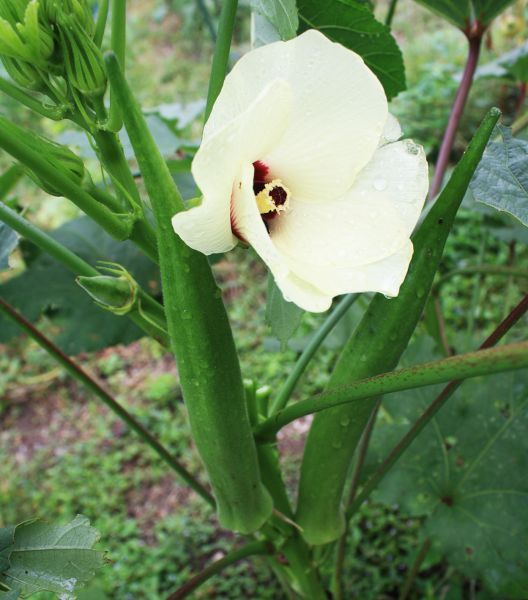
Caption: The okra in the garden was the largest I had ever seen.
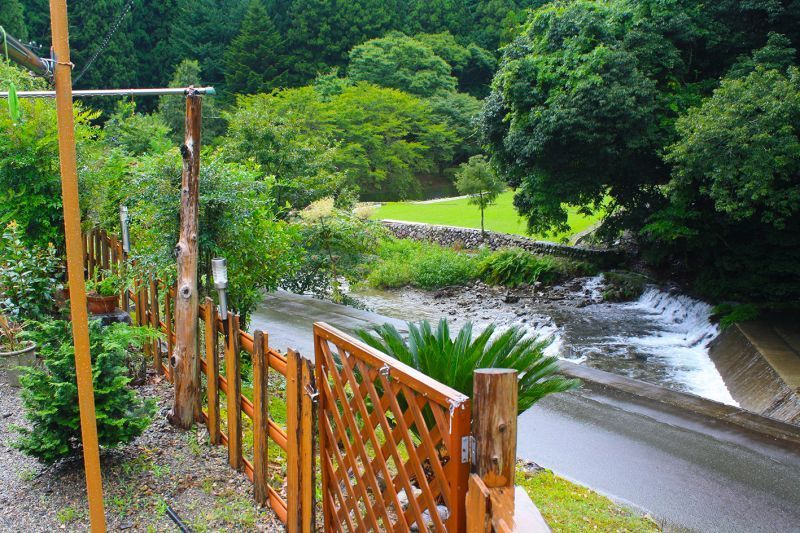
Caption: The river is only steps from the house.
My first taste of traditional Japanese farm life was fishing with a simple pole and line in a small pond next to the house. In these ponds, Ogura-san raises sweet fish, hairy crabs and other creatures. To get the fish to start biting, we tossed some shrimp bits into the pond. We had a few nibbles on our lines, but it was not our lucky day to hook a fish. Ogura-san assured me that I would still have a chance to try the sweetfish for dinner.
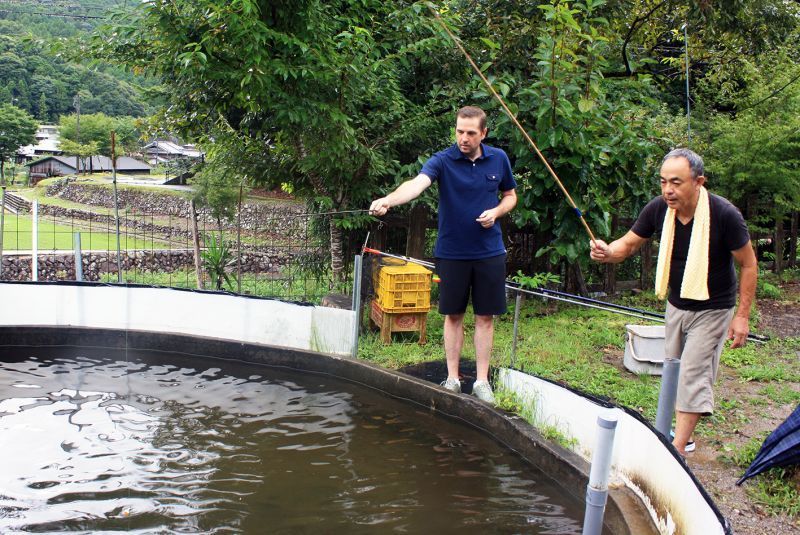
Caption: We tried to catch some fish, but they weren’t biting that day.
After fishing, I jumped in a truck with Ogura-san and we headed down the road to get some fresh mountain spring water to use when cooking our dinner. After a short drive, we stopped on the side of the road and I could see some water pipes next to a small prayer spot where visitors can leave offerings. We filled up two water jugs for making rice and boiling seafood and made the return trip to the guesthouse.
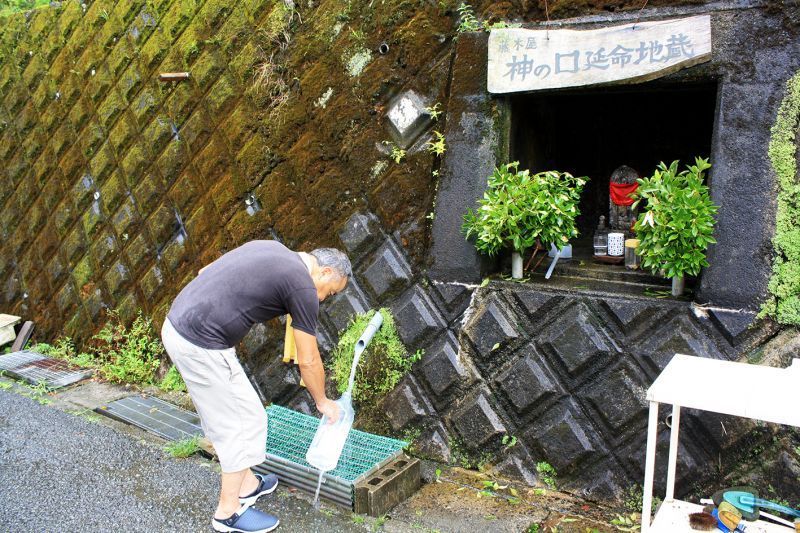
Caption: Ogura-san getting some mountain spring water for cooking rice.
As the dinner preparations started, I was quickly brought into the process and given some tasks to complete. As Ogura-san used a torch to get the traditional stove fired-up, I was handed a hatchet and shown how to safely split some Japanese cedar pieces into kindling. It didn’t take long for the stove to reach cooking temperature and the fragrant smell of burning cedar filled the air. A large pot of rice and spring water was placed on the stove and the cooking had begun.
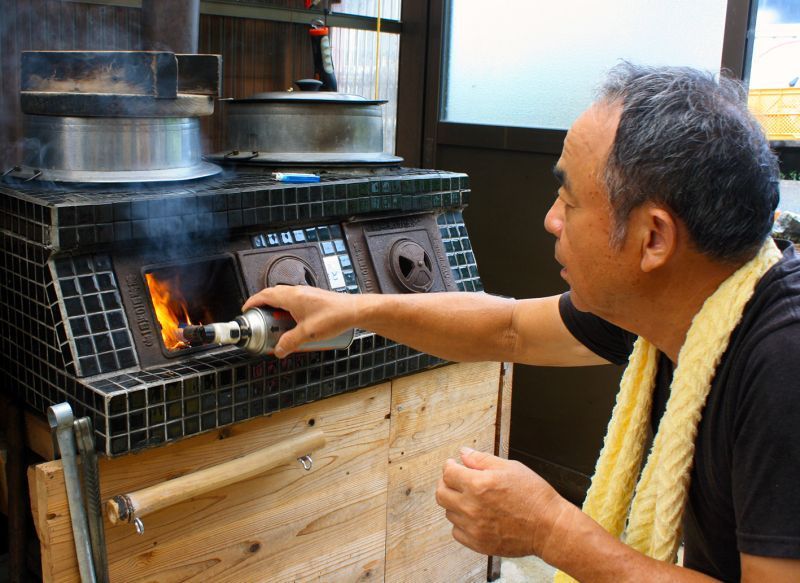
The first dish that we prepared was salted sweetfish, which we were going to cook over charcoal. We skewered the cleaned fish through the mouth and body and took them to the covered cooking and eating area connected to the house. There was a handmade table with a bbq pit in the middle and bamboo stands ready to hold the skewered fish over the charcoal so they could slowly cook while the other dishes were prepared.
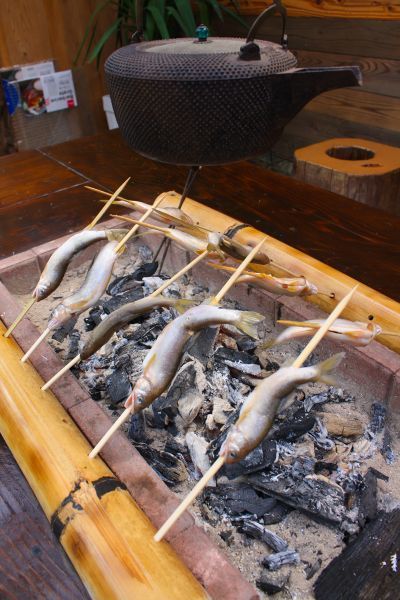
Caption: I helped to skewer the sweetfish to prepare them for cooking.
It took about 20 minutes to cook the fish and we could just leave it sitting over the charcoal while the other dishes were being readied. When it was time, we all stopped for a moment and tried one of the fish. As with most Japanese bbq meals, we ate each dish as it was finished cooking and then continued our preparations until the next dish was ready. I had tried some sweetfish in other dishes, but this simple style of cooking the pre-salted fish was perfect. You can eat the entire fish, other than the head and fins, without worrying about the bones.